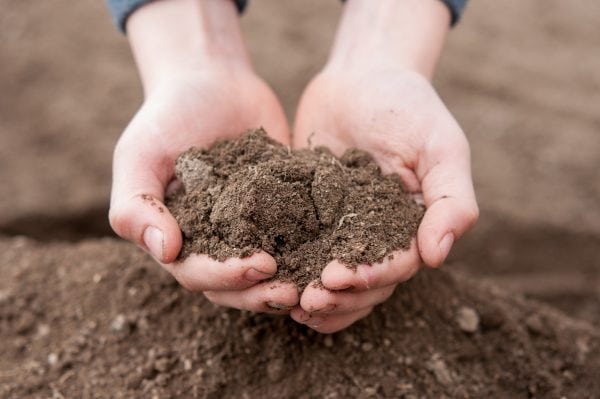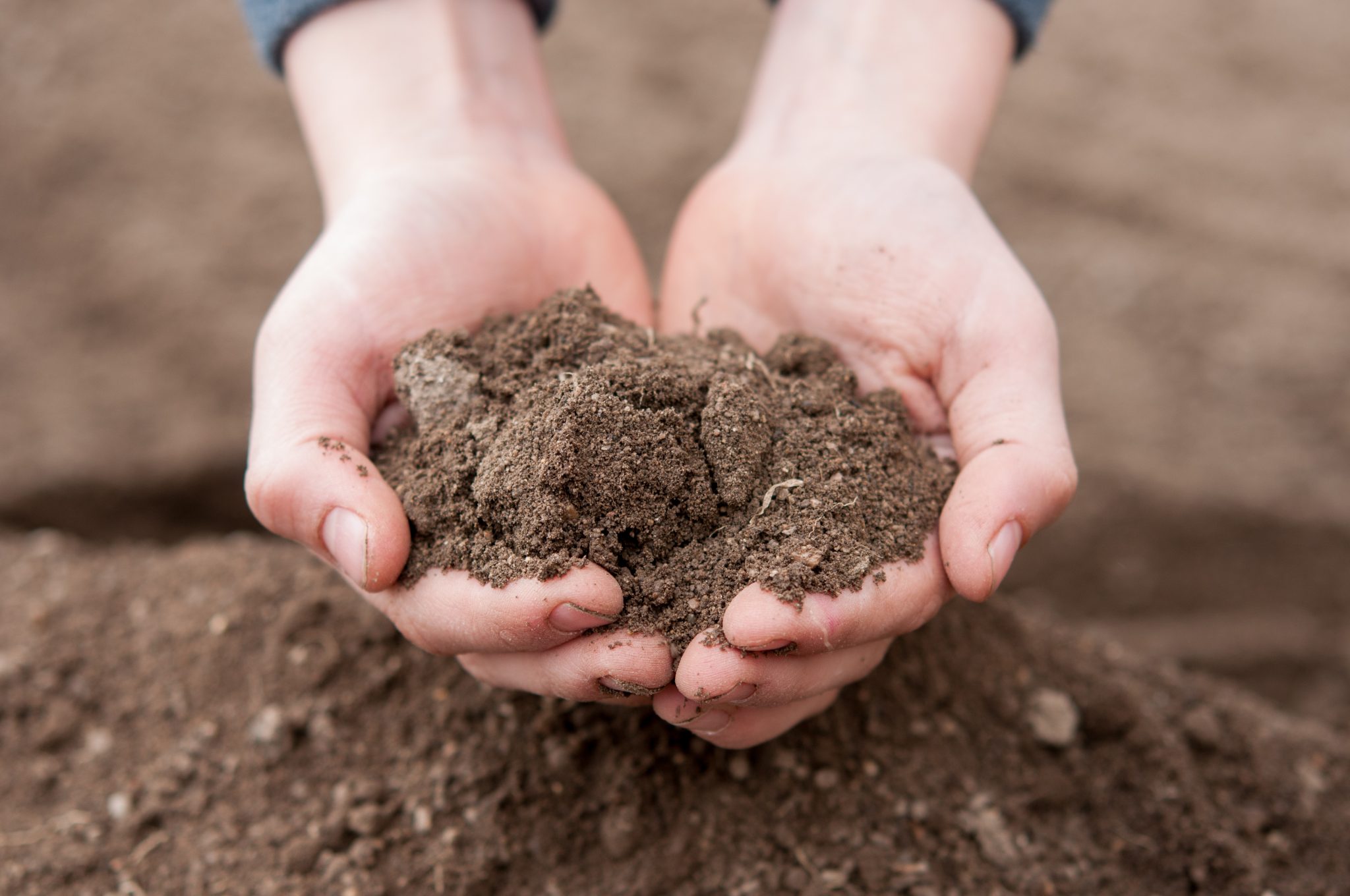Healthy Soils

Properties of a Healthy Soil
- High organic matter content

- Optimal nutrients and pH for plant growth
- Stable aggregates to promote water infiltration
- Large population of beneficial organisms
- No compaction layers
- No contamination
The Role of Soil Organic Matter
Soil consists of four components: minerals, air, water, and organic matter. Organic matter is comprised of carbon-containing compounds from dead and living plant and animal materials. Organic matter performs many functions that support soil heath, such as increasing the amount of plant-available nutrients and water a soil can hold. It also improves soil structure and decreases risk of soil compaction. Soil organic matter is a source of “food” for microorganisms. One handful of soil contains more microorganisms than there are people on earth. These microorganisms in soils are important for recycling nutrients for plant growth, purifying water, and controlling pathogens.
Many soils in Alabama are depleted in soil organic matter due to the warm climate, coarse-textured soils, and intensive farming practices historically used in the state. It is important to rebuild soil health to conserve this natural resource for use by future generations. Practices such as reduced tillage and cover cropping can increase organic matter and improve soil health in Alabama.
Practices to Improve Soil Health
Provide a cover to the soil. Soil that is left bare is susceptible to water and wind erosion. Planting cover crops protects soil from erosion and helps to build soil organic matter when cash crops are not actively growing. Cover crops can also supply plant nutrients, regulate soil temperature, improve soil structure, and suppress weeds.
Disturb soil less. Tillage disrupts soil aggregates and increases risk of soil compaction, which can hinder root growth and decrease production on agricultural soils. Tillage also speeds up the process of soil organic matter decomposition. Reducing tillage helps prevent runoff, increase soil organic matter, and reduce erosion.
Increase plant diversity. Different plants can provide diverse benefits to the soil. As an example, consider
a cover crop mixture of rye, clover, and radish. Rye produces a high biomass that can increase soil organic matter storage. Clover uses a biological process to convert nitrogen from the air to forms of nitrogen that plants can use. Radishes have deep taproots that can often break through soil compaction layers. Increasing plant diversity through crop rotation can also help break pest cycles.
Keep an active crop growing. Actively growing plants secrete sugars, organics acids, and other compounds that  provide a food source for soil microorganisms. The area around plant roots is called the rhizosphere, and this area contains the highest concentration of microorganisms in the soil. By keeping an actively growing crop in the soil, microorganisms can recycle nutrients to promote healthy soil.
provide a food source for soil microorganisms. The area around plant roots is called the rhizosphere, and this area contains the highest concentration of microorganisms in the soil. By keeping an actively growing crop in the soil, microorganisms can recycle nutrients to promote healthy soil.
Can Soil Health Be Measured?
Changes in soil health occur slowly, and measuring soil health is challenging. However, scientists can use certain tests to assess soil health. A few examples include the following:
- Soil organic matter. Soil organic matter increases nutrient- and water-holding capacity of soil. Soil organic matter is an important indicator of soil health.
- Soil respiration. This test measures microbial activity in the soil. It is also a good predictor of plant-available nutrients from soil organic matter.
- Soil aggregation. Stable soil aggregates increase water infiltration into the soil and are good indicators of soil health.

